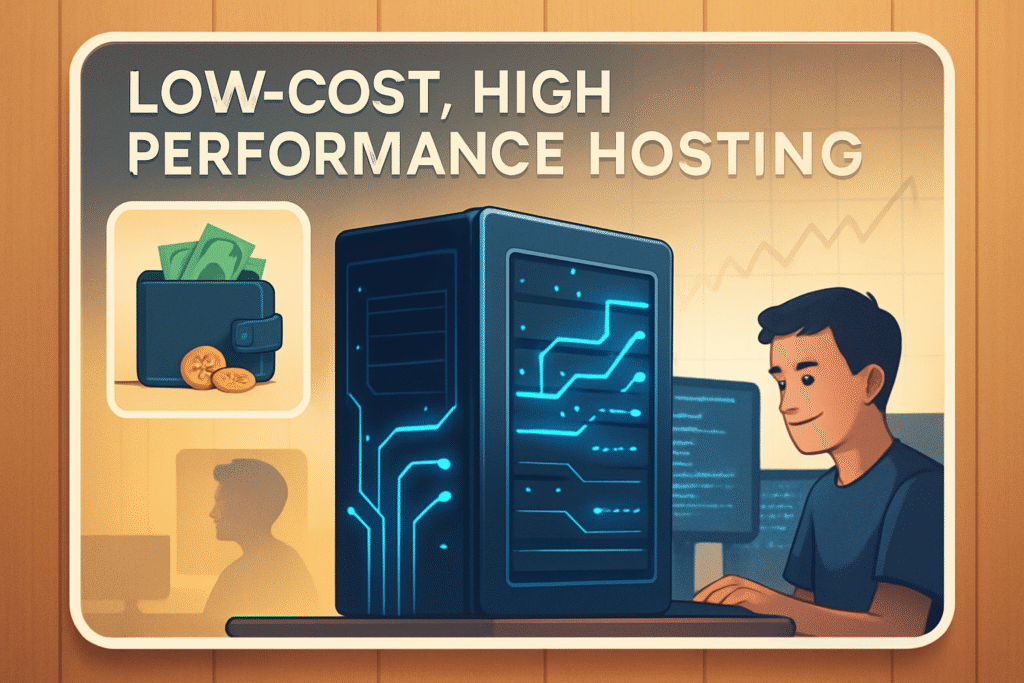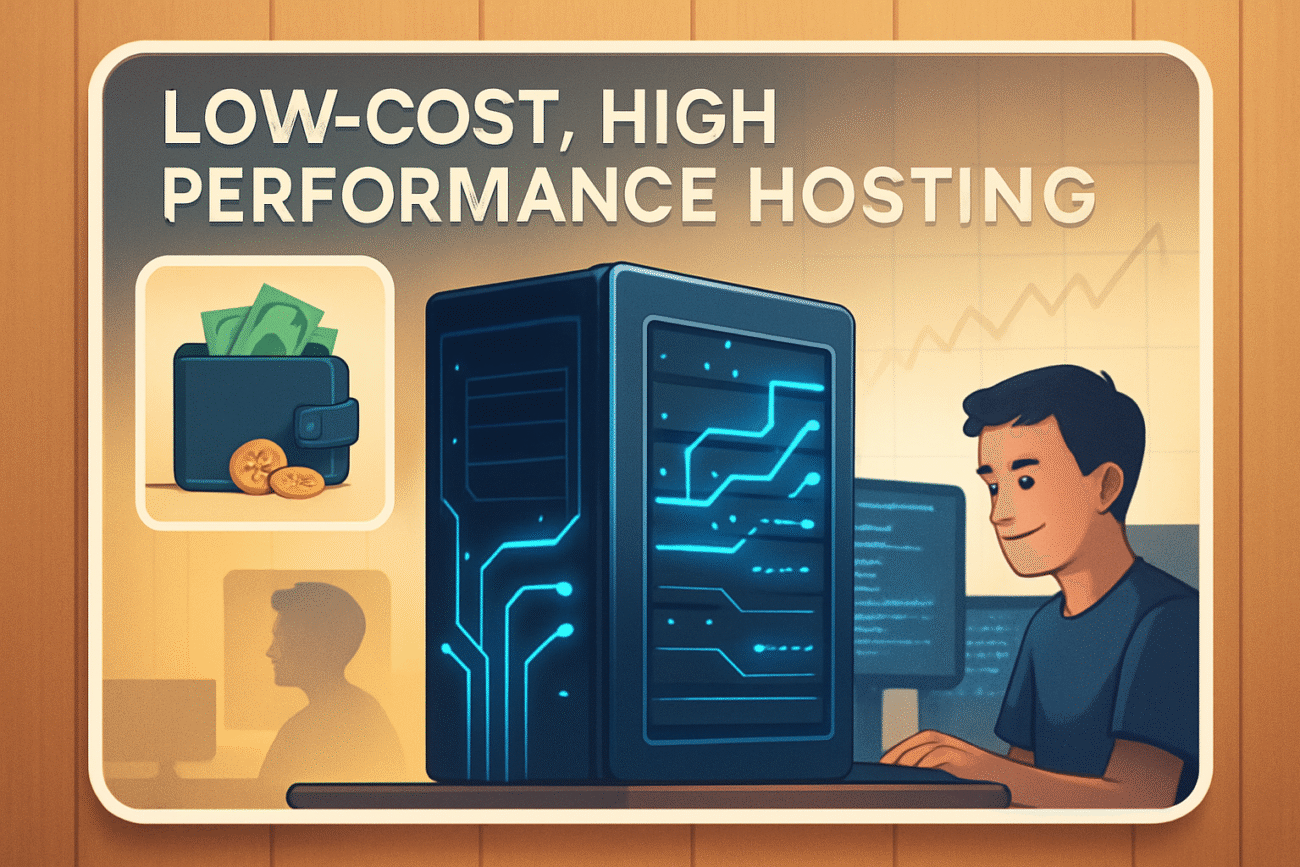How to Keep Your Hosting Costs Low While Getting Great Performance
When I built my very first website, I had no idea what I was doing. I thought I needed the most expensive plan, the fastest server, and all the add-ons that popped up in the checkout box. Guess what? I wasted money, and my site still wasn’t as fast as I wanted it to be.
Over the years, I learned something important: you don’t need to spend a fortune to get great website performance. What you really need is the right hosting strategy.
In this post, I’ll share exactly how I personally keep my hosting costs low while still getting fast, reliable performance. If you’re building your first blog, running a small business site, or just trying to save money on hosting, these tips are for you.

Table of Contents
Why Hosting Matters More Than You Think
When I first heard the word “hosting,” I thought it was just about where my site lives. But hosting is actually the foundation of your online presence.
If your hosting is slow, visitors leave.
If your hosting is unreliable, your site goes down and you lose trust.
If your hosting is expensive, you end up paying more than you make.
That’s why I made it my goal to find the balance: affordable hosting with great performance. And yes—it’s possible.
Step 1: Choose the Right Hosting Provider
This is where most people, including me at first, make mistakes. There are thousands of hosting providers out there, and many of them advertise super cheap prices. The problem?
- Hidden fees.
- Renewal costs that suddenly triple.
- Poor support when something breaks.
- Servers that are overloaded and slow.
After trying different hosts, I finally found one that gave me exactly what I needed: SiteGround.
Here’s why I stick with them:
- Affordable plans that don’t kill my budget.
- Fast performance thanks to advanced caching and Google Cloud servers.
- Excellent support—real people who actually solve problems.
- Free SSL, daily backups, and CDN integration already included.
For me, SiteGround strikes the balance between low hosting costs and high-quality performance.
Step 2: Start Small and Scale as You Grow
One of the smartest money-saving lessons I learned was this: don’t buy more than you need right now.
When I was new, I signed up for a big plan because I thought, “What if my site grows?” The truth is, most beginners don’t need the highest-tier hosting.
Here’s what I do instead:
- I start with the cheapest plan that fits my needs.
- I monitor my traffic and resource usage.
- When I outgrow it, I upgrade.
This way, I only pay for what I actually need. On SiteGround, upgrading is smooth—you can scale up anytime without downtime.
Step 3: Take Advantage of Free Features
Another thing I learned: some companies charge for features you can get free. That’s why I love using a host that already includes the essentials.
With SiteGround, I get:
- Free SSL (many hosts charge for this).
- Free daily backups (saves me from disasters).
- Free CDN integration (helps with global speed).
- Free email accounts with my domain.
All of these extras keep my hosting costs low because I’m not paying for third-party tools.
Step 4: Optimize Your Website for Speed
Hosting is just one part of the puzzle. The way you build and manage your website also affects performance. I’ve seen people upgrade to expensive plans when all they really needed was to clean up their website.
Here’s what I personally do to keep my site fast (without overspending on hosting):
- Use a lightweight theme instead of a bloated one.
- Compress images before uploading them.
- Limit plugins to only the ones I need.
- Enable caching (SiteGround has built-in caching).
By optimizing my website, I don’t need to pay for extra resources. My cheap plan still performs like a premium one.
Step 5: Lock In Savings with Long-Term Plans
Here’s a trick I use that saves me a lot: sign up for a longer hosting plan upfront.
Hosting companies usually give a discount for the first billing cycle. If you only sign up for one year, you’ll face higher renewals next year. But if you lock in for 2–3 years, you freeze that discounted price.
When I switched to SiteGround, I signed up for a longer term. It kept my costs low for multiple years, while I continued to enjoy high performance hosting.
Step 6: Avoid Hidden Fees and Upsells
I’ve been burned by this before. Some hosts try to sell you add-ons you don’t actually need, like:
- Paid email hosting (when it should be included).
- Expensive SSL certificates (when free SSL works perfectly).
- Extra backup services (when daily backups are already free).
Now I always double-check what’s included. That’s another reason I use SiteGround—they don’t nickel-and-dime me with unnecessary upsells.
Step 7: Monitor Your Usage
Here’s a tip that doesn’t get talked about enough: monitor your hosting resources.
I log into my hosting dashboard regularly to check:
- CPU usage.
- Storage space.
- Bandwidth.
By keeping an eye on it, I avoid surprise overage charges. And if I do see growth, I can upgrade at the right time instead of paying penalties.
Step 8: Use Free Tools to Support Your Hosting
Instead of paying for extra tools, I rely on free or included resources:
- Cloudflare CDN (free tier is powerful enough).
- WordPress speed plugins like Autoptimize.
- Image compression tools like TinyPNG.
All of these reduce the load on my hosting, which means I can stay on a cheaper plan longer while still enjoying great performance.
Frequently Asked Questions
Can cheap hosting still give good performance?
Yes, if you choose the right provider and optimize your website. I’ve kept my hosting costs low while still running sites that load in under 2 seconds.
What’s the best hosting plan for beginners?
For most beginners, the basic SiteGround plan is more than enough. It’s affordable, reliable, and comes with everything you need to start.
How can I reduce renewal costs?
The best way is to sign up for a longer plan upfront so you lock in the low introductory rate.
What features should be free with hosting?
At minimum: SSL, backups, email, and CDN. If a host charges extra for these, look elsewhere.
My Personal Recommendation
After trying different providers, I can honestly say that the best balance of low cost and great performance I’ve found is with SiteGround.
- It’s beginner-friendly.
- It’s affordable.
- It delivers fast, reliable performance without headaches.
If you’re serious about keeping your hosting costs low but still want your site to run smoothly, I highly recommend giving SiteGround a try.
Click here to check SiteGround’s hosting plans and see which one fits your needs best.
Final Thoughts
I’ve wasted money before chasing “cheap” hosting that turned out to be slow and unreliable. I’ve also overspent on premium plans I didn’t need.
What I learned is this: the sweet spot is finding a trusted host with affordable plans and strong performance—and then using smart strategies to stretch your dollars further.
That’s exactly how I keep my hosting costs low while getting the great performance my websites need. And you can do the same starting today.
Ready to save money and get great hosting? Check out SiteGround here.

